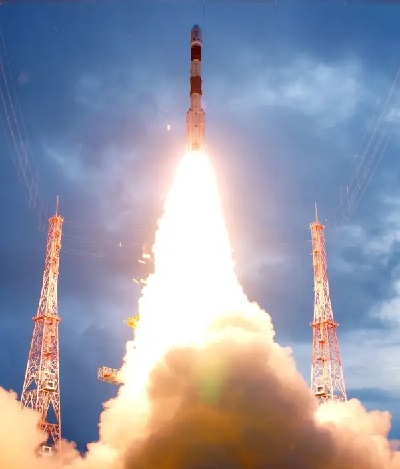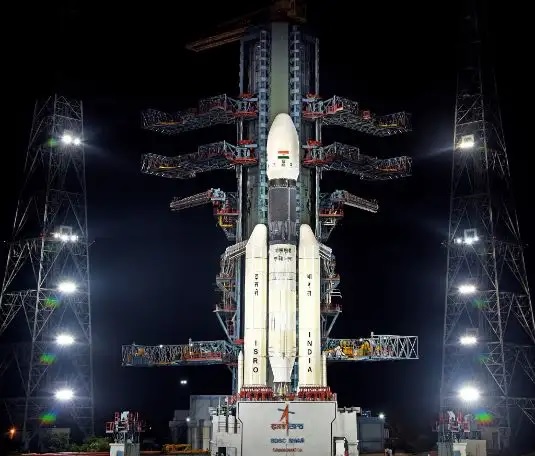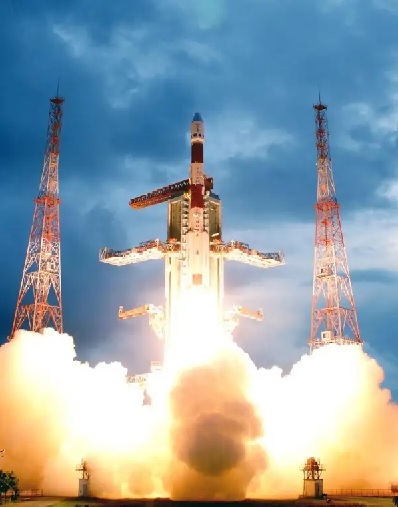Quick Facts About the Chandrayaan Mission
Written by Madhav Bahl, a grade 11 student.
Chandrayaan-1-was ISRO’s first mission to the moon. It was launched on the 22nd of October 2008 from The Satish Dhawan Space Center in Sriharikota, Andhra Pradesh.
Written by Madhav Bahl, a grade 11 student.
If you love space, then this article covers some interesting facts about Chandrayaan you’ll love to know. You may already know that on the 23rd of August 2023, India’s space agency, ISRO, sent its third rocket to the moon. This was called Chandrayaan-3.
Before we tell you about the important facts about Chandrayaan 3, let’s quickly know the history of the Chandrayaan mission.
The Chandrayaan mission of India
India is now one of the four countries in the world to successfully reach the moon – it’s the first to land on the south part of the moon.
The idea of the Chandrayaan programme started way back in 2000 under late Prime Minister Atal Bihari Vajpayee’s leadership. However, the mission planning only began in 2003 when many of the country’s leading scientists were called together. Six months later, in October 2003, Chandrayaan-1 project actually started.
In literal words ‘chandra’ means moon in Sanskrit and yaan has many connotations like adventure and curiosity, but in this context it was derived from the word ‘yana’ which means craft vehicle – so it basically means a mooncraft.
Chandrayaan-1 was the the first lunar space probe of the Indian Space Research Organisation (ISRO). It found water on the Moon (more about that below)
Chandrayaan-1

It was launched on the 22nd of October 2008 from The Satish Dhawan Space Center in Sriharikota, Andhra Pradesh.
It was designed to orbit the Moon and make observations
The mission went on for 312 days instead of two years, but it achieved 95% of its objectives.
The mission cost 88.73 million USD approximately and lasted 312 days. The mission consisted of The Polar Satellite Launch Vehicle ( PSLV-XL), and had a weight of 1380kgs.
What’s a Launch Vehicle?
A launch vehicle is the vehicle that is used to carry a spacecraft beyond Earth’s atmosphere. The PSLVs are ISRO’s main launch vehicle that have carried many missions to space.
Goals of the Chandrayaan-1 Mission
The main aim of Chandrayaan-1 was to place an unmanned spacecraft in an orbit around the Moon.
Some more objectives:
- To discover the composition of lunar rocks
- To research for ice both on the surface and below it
- To get high resolution imaging of the moon’s resources to provide find more about its evolution
- To observe the X ray spectrum in the energy range of 10-200 electron volts. This is done to find the gases that are found at room temperature- most of which have been deposited by solar winds.
- To study the debris of the moon by crashing the impactor with the moon.
- Chandrayaan-1’s objective was only to place an an unmanned spacecraft in an orbit around the Moon.
What were the outcomes of the Chandrayaan mission?
- The mission discovered water in the form of minerals on the lunar surface
- This data is only from the impact caused when a small deorbit was released and the freefall caused this motor to crash to the surface of the Earth. This means that this data is inconclusive till further verification is done.
- It helped us understand more about the moon’s geology, composition and surface characteristics.
What happened to the mission?
On 14 November 2008, the Moon Impactor probe of Chandrayaan-1 landed on the lunar surface. It was intentionally crashed near the South Pole of the moon. This point has been named ‘Jawahar Sthal’ or Jawahar Point – in honour of independent India’s first Prime Minister of India, Jawaharlal Nehru, as 14th November was his birthday.
The orbiter mission had a mission life of two years, but it was aborted on August 29, 2009 when the communication with the spacecraft was lost.
In short
Chandrayaan-1 was a pretty successful first mission for India and was a huge boost to the space program and led to the Mangalyaan mission and Chandrayaan 2 and 3 which have made India one of the strongest space nations in the world.
After Chandrayaan-1 mission, came Chandrayaan-2. This was an ambitious mission which was meant to land on the moon. So, if you want to know what happened to Chandrayaan 2 mission, then here’s all about it.
Chandrayaan 2

Chandrayaan-2 was launched from The Satish Dhawan Space Center in Sriharikota, Andhra Pradesh on 22nd July 2019.
It consisted of three main parts – the lunar orbiter, a lander named Vikram and a rover named Pragyan
The total mission cost was 96.5 million dollars which is still less than the budget of a movie named Interstellar!
Goals of the Chandrayaan-2 Mission

- To demonstrate how to soft land on the moon.
- Map the lunar surface
- Continue the study of water on the moon
- To study lunar topography and mineralogy
- To study lunar soil and ice caps on the moon’s south pole
What happened to Chandrayaan-2 mission?
On 6th September 2019, the Vikram lander crashed while attempting to land on the moon.
Why did Chandrayaan-2 lander crash?
The lander, Vikram, was meant to lose most of its velocity as it neared the surface of the moon (meaning it was supposed to slow down). That did not happen and it crashed because of high velocity – which basically means that it hard landed instead of having a soft landing (the difference between a hard and soft landing is that a hard landing causes a lot of damage to the carrier whereas a soft landing doesn’t).
However, the mission was not a failure.
Even though Chandryaan-2’s lander crashed, its orbiter, says ISRO, is “functioning very well”. In fact the orbiter helped the Chandrayaa-3 mission as it was communicating with it. The orbiter continues to provide valuable data to ISRO.
Chandrayaan- 3

Chandrayaan-3 was a follow-on mission to Chandrayaan-2. The main idea of this mission was to “demonstrate end-to-end capability in safe landing and roving on the lunar surface”, according to ISRO. It consisted of Lander and Rover configuration – the lander was called Vikram and the rover was called Pragyan (like Chandrayaan-2)
Details about Chandrayaan-3
Chandrayaan-3 was launched on 14th July 2023 in the hope that India could finally soft land on the moon.
The missions was a success as the lander was able to soft land on the south pole of the moon on 23rd August 2023
The mission objectives of Chandrayaan-3 were
- To demonstrate safe and soft landing on the Moon’s surface
- To demonstrate the rover moving around on the moon
- To conduct scientific experiments in place. To understand the composition on the moon, especially to try and find water on the moon.
Chandrayaan-1 had found that traces of water on the moon in the form of solid minerals but due to these being seen only for a short time, it was still not been proven. Hence one of Chandrayaan-3’s aim is to prove this
What was different in Chandrayaan- 3?

Based on the learnings from Chandrayaan -2, there were some changes made to Chandrayaan-3
- The lander was equipped with a laser Doppler Velocimeter which can measure altitude in 3 directions to help navigate better
- The lander does not have wheels but stilts that have helped increase stability
- More backups have been added so that even if there is a software failure like last time, the missions wouldn’t fail
The Chandrayaan-3 mission was a big success and cemented India’s status as a space superpower.
What has the Chandrayaan- 3 mission found?
One of the main questions that ISRO has was – what are lunar soil and rocks made of in the south polar region? Also, how does this differ from other regions of the moon?
According to ISRO, the Chandrayaan-3 rover is trying to find answers to these questions with the scientific instruments it is carrying.
Here is a video released by ISRO about what the rover is doing now:
Source: ISRO
The rover has found presence of some small elements, like Sulfur, and also some major expected ones like Aluminum, Silicon, Calcium and Iron.
Hope this gave you some interesting facts about Chandrayaan. As time goes on, we will find out more about the amazing discoveries made by Chandrayaan-3, which will give us a to understand more about a completely unexplored region- the lunar south pole.
Keep reading!

Better Your Child’s G.K. In 3 Minutes – Get This Free Newsletter
Get fun facts, simple and easy news, quizzes, and lots of other interesting things to read in your mailbox – for free! It’s what we call GK-on-the-go!
I Kid You Not now has a large readership across India and also parts of the world. If you want to write for us, you can submit your story here. You can also apply to become a news anchor. Apply here




Comments